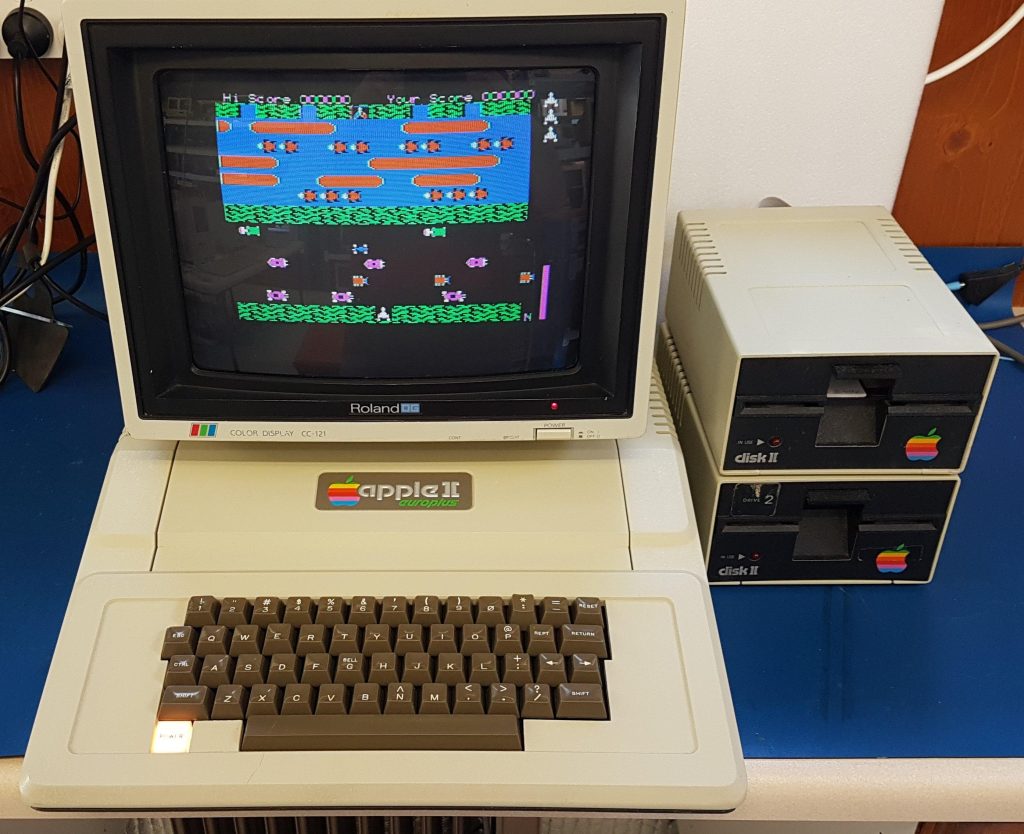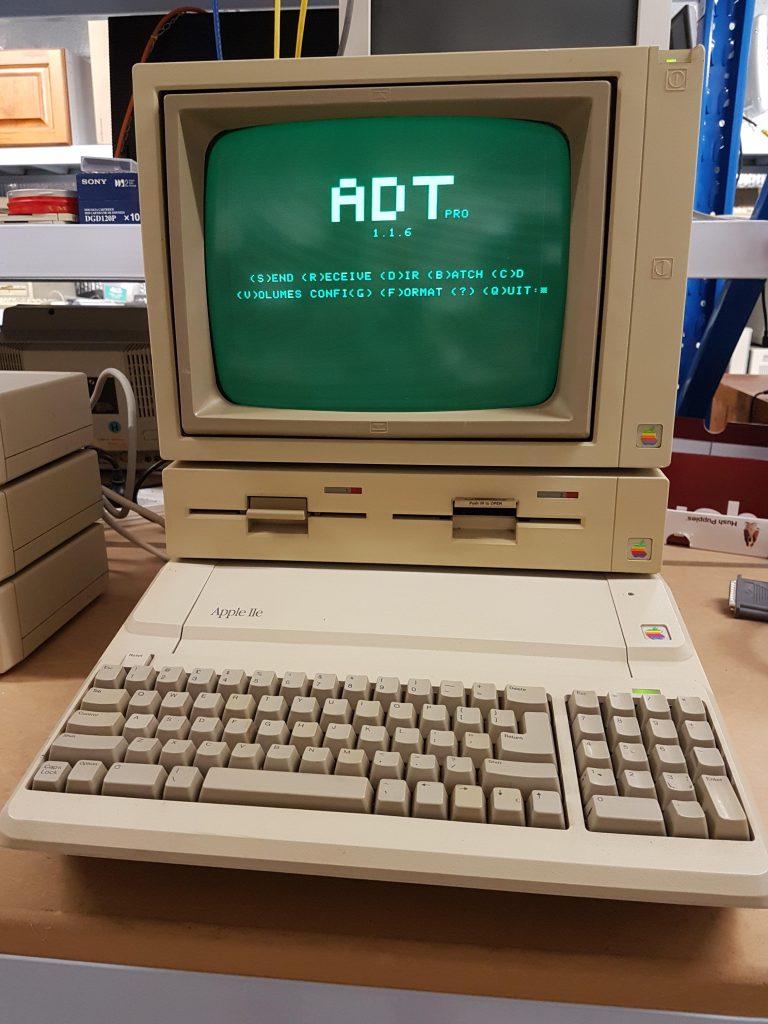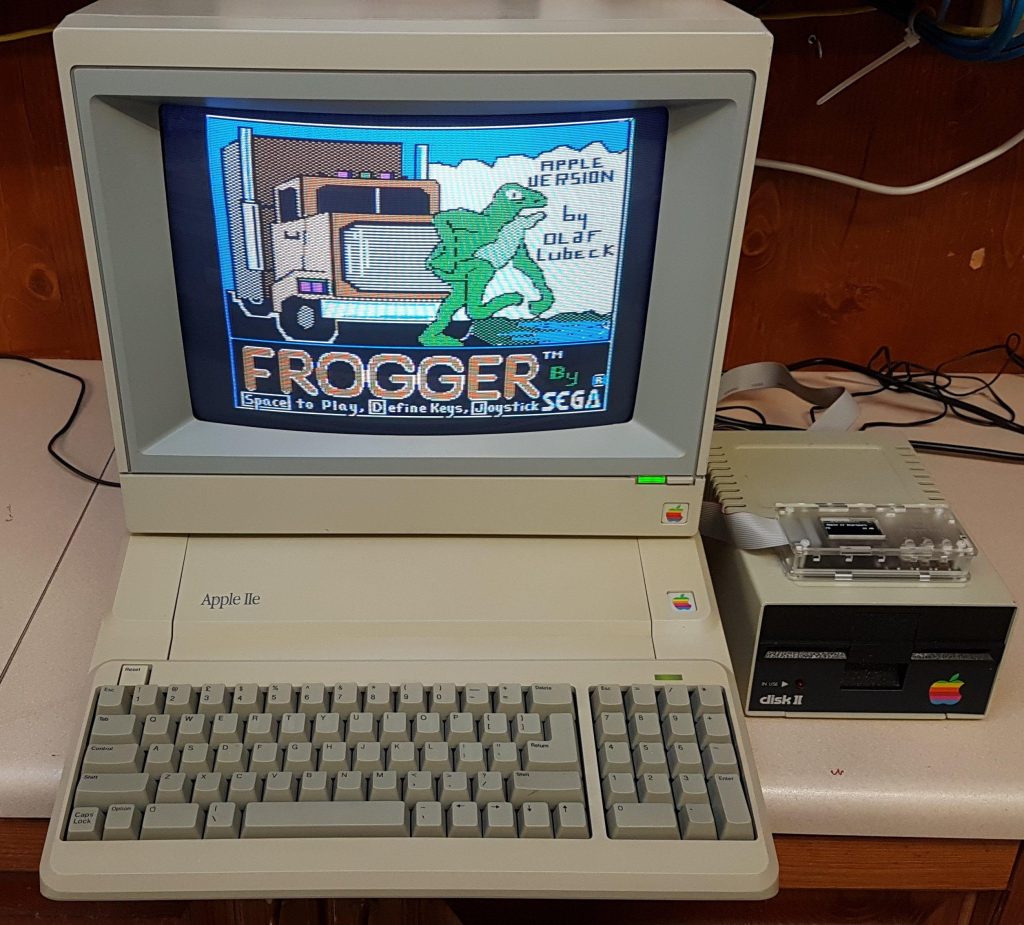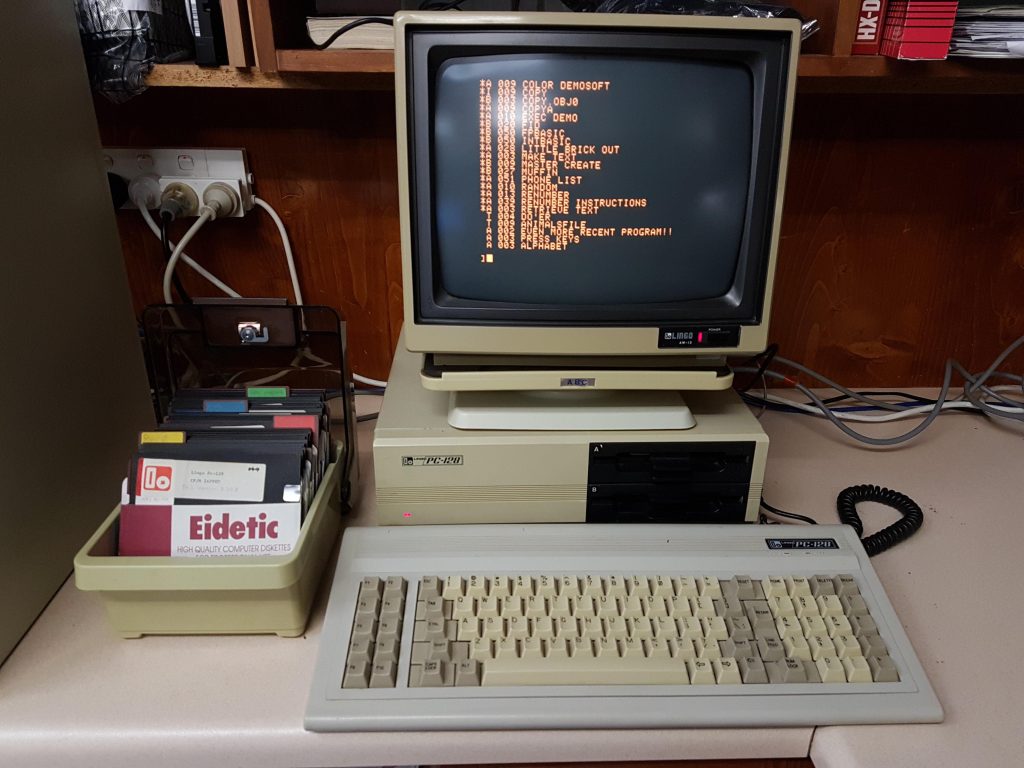
The Apple II computer is iconic. It was the first computer that i ever touched – one arrived at Unley High in 1981.
I’m sure there are original Apple II machines in Australia but the earliest i could expect to find was a Europlus which uses PAL video without the colour encoding from the factory. This one appears to have been manufactured in 1979 when i was still at school. It was owned by Flinders University.
This one was a gumtree purchase and came with two third party drives. It had a language card and a disk controller card.
The keyboard was missing a key, and the replacement i got was not for this particular keyboard – it’s easy to spot if you look in the pic. Perfection is not my goal.
The power supply looked fine other than the line filter caps, and the machine largely worked – most of the time. Often it would stop working, and then it would need a push or a prod on the motherboard to get it going again.
I don’t pull down stuff just for kicks, but i pulled all the chips, cleaned the board and the ICs – in some cases re-attached some legs that had broken – and put it all back together.
The controller card and drives were all faulty, so i suspect they came from a repair box at the university. The controller card needed one IC replaced. Both of the drives needed replacement Darlington drivers – one was cracked. I eventually replaced the third party drives with Apple units.
I like to fill slots, so i added:
- Printer (Epson): Slot 1
- Super serial: Slot 2
- 80 column card (Videx clone): Slot 3
- Z80 card (softcard clone): Slot 4
- Booti: Slot 5
- Disk Controller (clone): Slot 6
- RGB card (Taxan): Slot 7
With the Z80 card installed i could boot CP/M but i got some strange behaviour including calculation errors in MBasic. The silkscreen indicated that IC B1 should be a 74S, but it was a 74LS. When i changed to the S part, the calculation issue resolved.
I also found an issue where the 80 columns mode would not work with Wordstar. This seems to have been related to a known problem with the Softcard when a Videx card is installed. The solution was to add a capacitor between pins 10 and 11 on IC15. This resolved the issue.
The booti card does a great job of serving up disk images including Total Replay. Real floppy disks provide a more genuine experience, but there’s no doubt that they take more patience.



